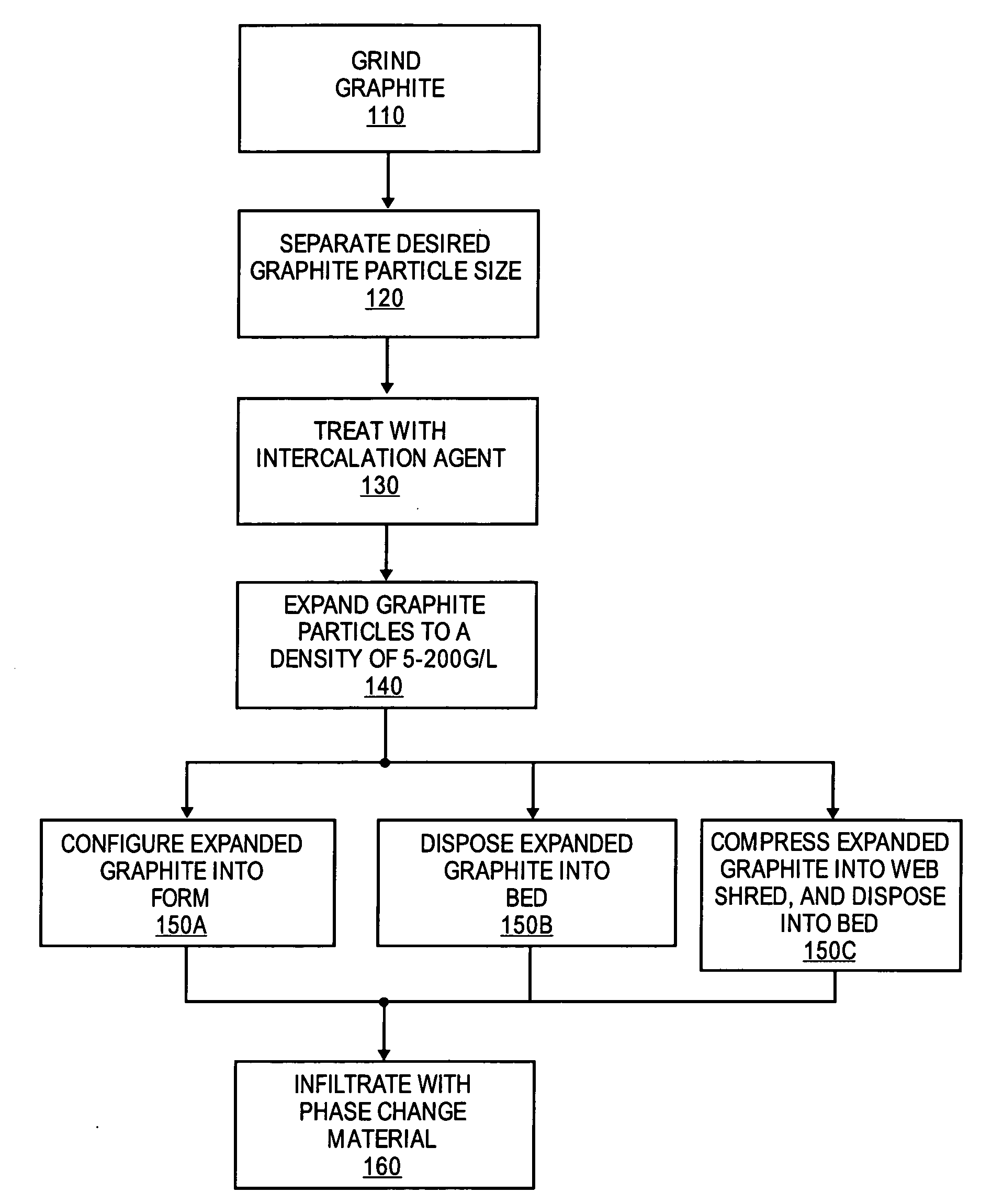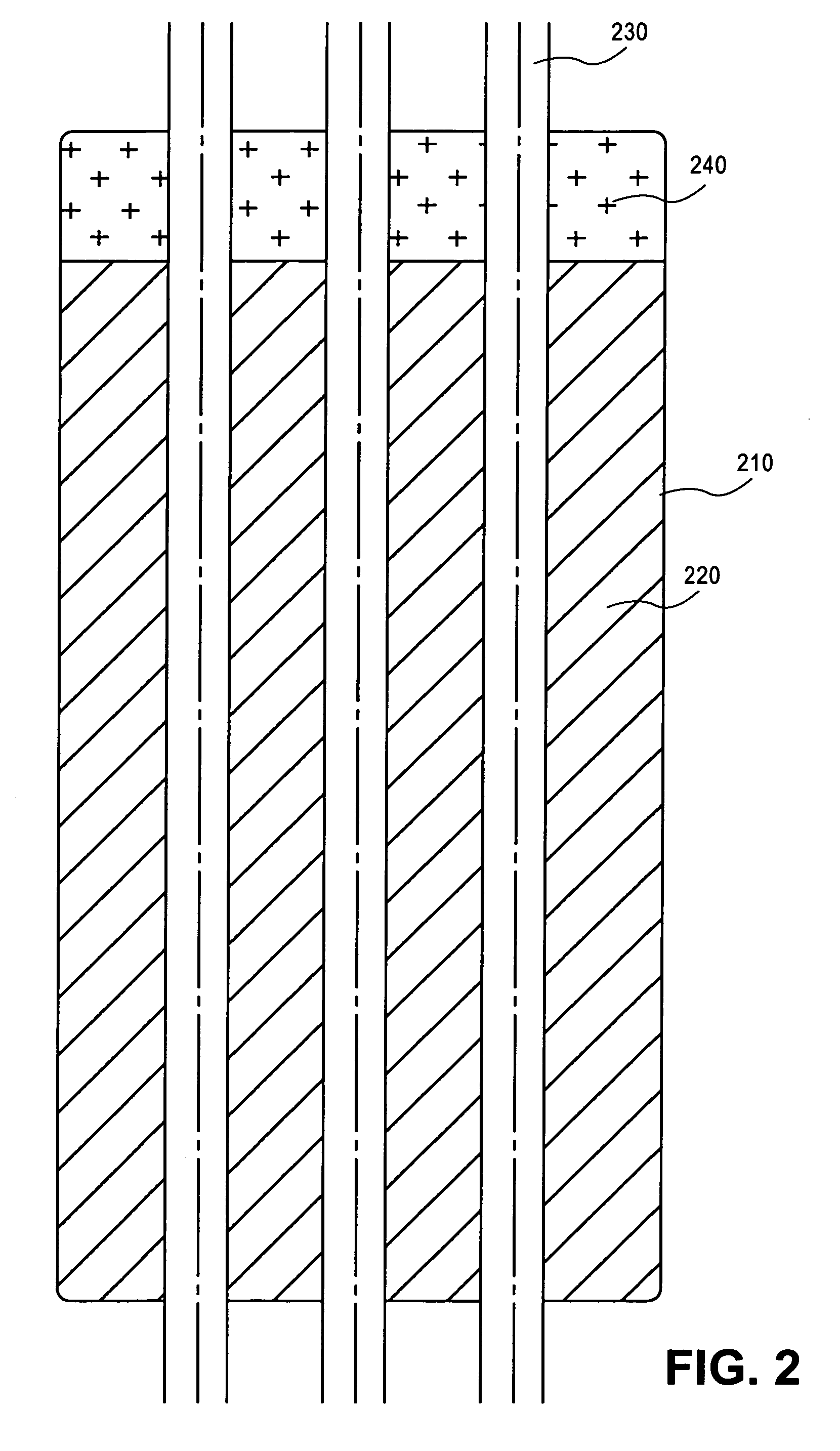Process for manufacture of a latent heat storage device
a technology of latent heat storage and manufacturing process, which is applied in the direction of indirect heat exchangers, chemistry apparatus and processes, lighting and heating apparatus, etc., can solve the problems of increasing the difficulty of charging and discharging the latent heat storage device, the heat conductivity of most phase change materials is rather low, and the problem of increasing the difficulty of charging and discharging, etc., to achieve the effect of facilitating wetting of the expanded graphite material
- Summary
- Abstract
- Description
- Claims
- Application Information
AI Technical Summary
Benefits of technology
Problems solved by technology
Method used
Image
Examples
example 1
[0066]In order to determine the influence of the amount of the intercalation agent on the degree of expansion, a series of intercalation and expansion tests were performed. The mass of the starting graphite material (flakes of natural graphite) was the same in each test, but different amounts of intercalation agent were added to the graphite flakes.
[0067]Fumic nitric acid was used as the intercalation agent. The expansion was carried out at 500° C. In a second series of tests, the same amounts of fumic nitric acid were applied, but the expansion was carried out at 800° C.
[0068]The applied amount of natural graphite and acid, the expansion temperature and the density of the expanded graphite material are compiled in Table 1.
[0069]It can be seen that the density of the expanded graphite material tends to be higher the lower the amount of fumic nitric acid applied to a certain amount of natural graphite and the lower the expansion temperature. A higher density of the expanded graphite ...
example 2
[0070]In order to determine the influence of the expansion temperature on the degree of expansion, series of expansion tests at various temperatures were performed. For the expansion tests the sulfuric acid based intercalation compound Sumikon GHS SS3 low ash was used. The expansion was carried out at temperatures between 400° C. and 1000° C. The expansion temperature and the density of the expanded graphite material are compiled in Table 2.
[0071]Referring to Table 2, it can be seen that the density of the expanded graphite material tends to be higher the lower the expansion temperature is. A higher density of the expanded graphite material corresponds to a lower degree of expansion, and therefore to a less rugged and porous material, which is more easily infiltrated by a liquid phase change material.
TABLE 2Influence of the expansion temperature on the density of theexpanded graphite materialExpansionDensity of expandedtemperature / [° C.]graphite material / [g / l]400125008.56006.88004.9...
example 3
[0072]Different expanded graphite materials were prepared by carrying out the expansion at different temperatures. The first material was obtained by carrying out the expansion at 500° C. For sake of comparison, the other material was obtained by expansion at 800° C.
[0073]Each material was shaped into a plate-like porous matrix body (30×30×10 mm3) by application of moderate pressure. Both matrix bodies had a mass of about one gram / g, a density of about 0.1 g / cm3 and a porosity of 95%.
[0074]Each matrix body was infiltrated with a eutectic blend containing 58% by weight of KNO3 and 42% by weight of NaNO3. This phase change material melts at 220° C.
[0075]The infiltration was carried out in an autoclave. Prior to infiltration each matrix body was heated to 260° C. and covered by pouring the molten phase change material thereupon. The molten phase change material was also heated to 260° C. Infiltration was facilitated by at first evacuating the autoclave for 10 minutes and than applying ...
PUM
| Property | Measurement | Unit |
|---|---|---|
| Temperature | aaaaa | aaaaa |
| Percent by mass | aaaaa | aaaaa |
| Length | aaaaa | aaaaa |
Abstract
Description
Claims
Application Information
 Login to View More
Login to View More - R&D
- Intellectual Property
- Life Sciences
- Materials
- Tech Scout
- Unparalleled Data Quality
- Higher Quality Content
- 60% Fewer Hallucinations
Browse by: Latest US Patents, China's latest patents, Technical Efficacy Thesaurus, Application Domain, Technology Topic, Popular Technical Reports.
© 2025 PatSnap. All rights reserved.Legal|Privacy policy|Modern Slavery Act Transparency Statement|Sitemap|About US| Contact US: help@patsnap.com



